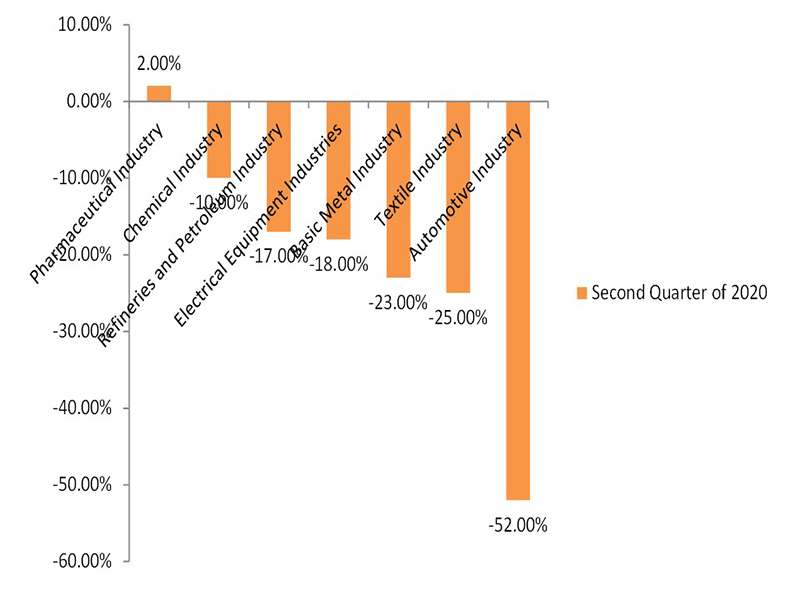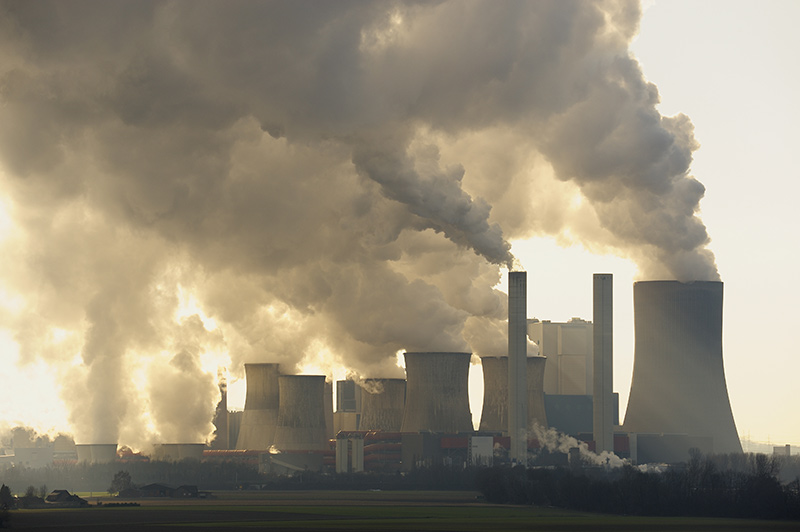From 1990’s the field of diesel motors and emanation control innovation has been exceptionally energetic. Much of the innovation advancement is regulatory-driven, and those controls are presently in different stages of execution. The field is ready with incremental changes to address unused and ancient challenges for the control of contamination within the environment.
Emission control catalysts are those which are used in the industrial machineries and automotive engines to purify the emission of the gasses which are released during the combustion of the fuel. During the production of the products in the large industries such as chemicals and pharmaceuticals several type of toxic gasses are released which are harmful for the environment. The emissions of the toxic gasses exhausted into the surroundings pollute the atmosphere and cause serious problems.
The main reason of the emissions is non-stoichiometric combustion, dissociation of nitrogen, and impurities in fuel and air. The emissions of concern are oxides of sulphur (SOx), oxides of nitrogen (NOx), oxides of carbon (COx), unburnt hydrocarbons (HC), and solid carbon particulates as during the burring of the fuels several particles are released which are effecting the environment on the larger extend. For lowering the effect and purification of the toxic gasses the emission control catalysts are used. The emission control catalysts help in maintain the air quality level as emission control catalysts are more used in the automotive which purify the polluted gasses before it release in the environment.
Incomplete combustion of fuel in the engine combustion chamber or due to formation of new chemical compounds exhaust fumes may contain quite a number of hazardous substances. Several technologies have been launched to control the pollution in the environment which are caused by big industries and these petrol, diesel and gas engines in automotive. Emission Control Catalyst technological developments was however not on the reduction of POP (produced persistent organic pollutants) substances but rather on precursors for ground level ozone formation that is NOx and volatile hydrocarbons (VOC); or carbon monoxide (CO) and particulate matter (PM).
In automotive industry, emission control catalysts have very important role as helped in several challenges of pollution which are been faced by the automotive industry. First, the emission regulations around the world have become increasingly more stringent requiring continued catalyst activity, selectivity and durability improvements which include reduced formation of byproducts such as N2O, a potent greenhouse gas. Moreover, emission control catalysts driven by the public concern regarding energy security and climate change, the efficiency of internal combustion engines is improving at a rapid pace. This efficiency gain entails a significant decrease in the exhaust temperature due to lack of waste heat generation. To successfully meet this so-called low-temperature challenge to achieve over 90% conversion at 150 °C or lower without compromising emission control cost innovative catalyst solutions and operating strategies need to be developed.
Government and higher authority are making several rules for both large manufacturing industries and automotive industries for the control of the release of the toxic gases in the environment. The applied automotive catalysis work continues for the use of the emission control catalysts in the cars and heavy duty vehicles in several regions which is in response to the need for robust systems and complies with new, stricter regulations for the control of nitric oxides (NOx), hydrocarbons and carbon monoxide. In the production of the emission control catalyst different type of metal are used which are palladium, platinum, rhodium and others.
IMPACT OF COVID-19 ON EMISSION CONTROL CATALYST MARKET
Emission control catalysts are being used for all the type of engines such as diesel, patrol and gas. The large machineries which are in the production of the finished goods are also equipped with the emission control catalyst to control the release of the toxic gasses in the environment. During the COVID-19 the production of the finished goods gone on halt to stop the spread of the corona virus in the countries. The demand of the goods has also fallen down only the demand of the essential goods was on rise. COVID-19 has downgraded the growth of every industry due to which every industry is running at 25% of their whole capacity.
No sector such as manufacturing, automotive is immune from the effect of the COVID-19 all the manufactures in the regions have faced the ups and down in the business due to the COVID-19 situation and unable to forecast the demand of the products. The government and the higher authorities have taken strict actions for lowering the spread of the COVID-19 which resulted in the lockdown in the countries and halt in the production of the finished goods. The pandemic have hit the economy very hard word wide as the lockdown was imposed in all the regions which have made the situation challenging for all sector for growth and also the developing actives will be done in the stager manner.
The production of the emission control catalysts have also been effected as manufactures were not able to arrange the specific grade of raw material which are used in the production of different type of emission control catalysts which are used in the heavy and low duty vehicles. The emission control catalysts are more used in the transportation vehicles but during COVID-19 situation the transportation from one country to another was on halt and also the demand of the automotive also fallen down by 50-55% approx. which has the negative impact on the emission control catalysts market. Small as well as large manufacture have been effected by COVID-19 as the demand of the finished goods have been fallen due to which investment in the new equipment have fall down which lower the demand of the emission control catalysts in the manufacturing of the industrial equipment.
IMPACT ON END-USER OF EMISSION CONTROL CATALYST ARE
• IMPACT ON AUTOMOTIVE INDUSTRY
The COVID-19 pandemic has had a swift on the production of automotive products and has negative effect on globally integrated automotive industry. Symptoms include a disruption in Chinese parts exports, large scale manufacturing interruptions across Europe, and the closure of assembly plants in the United States. The demand of two wheelers and cars have fallen down during the COVID-19 in developing countries due to which the demand of the emission control catalyst have fallen down in the production of the cars in the automotive industry. In India, several automotive industries have gone on lock down and also the demand of the cars and passenger’s vehicles have declined which effected the production of the industries. Automotive and Center for Macroeconomics teams have stated that the automotive sales have decrease 14-22% among the China, US and European markets in 2020 due to the COVID-19. The engine regulations for BS-4 have also changes due to which the demand of the automobiles have also been effected which have the negative impact on the emission control catalyst industries during the COVID-19.
• IMPACT ON INDUSTRIAL
The disturbance caused by COVID-19 has had a sensational short-term effect on climate alter as levels of emanations and major discuss toxin in industry and transport came to a close stop. The lockdown and the scaling down of financial movement has brought about in perceptible positive natural impacts in terms of CO2 outflow levels, quality of air, water and soil, as well as for the preservation of species and environments. The government and higher authority is also helping the emission control catalysts market growth as several rules or the control of release of toxic gases from the industries have been made for the safety of environment which increases the demand of the emission control catalysts in the industries in several regions.
In the pandemic period, global CO2 emissions are forecast to decline by around 8 per cent, the equivalent of 2.6 gigatons. As this will be the largest reduction ever recorded and will bring emissions back to levels last seen a decade ago. Several industries have gone on the lock down for more than 6 months due to which the pollution which is generated by industries have lower down and now industries or manufactures are not able to invest more money in the big machineries due to which the demand of the emission control catalyst which are used in the machineries for purification of the toxic gasses have fallen down. During the COVID-19 manufactures of emission control catalyst are not able to clear up the inventories even have faced huge losses due to low demand by the large industries.
FIGURE 1 GROWTH RATES BY INDUSTRY: 2020, SECOND QUARTER (IN PERCENTAGE)
 From the above diagram we can infer that all the industries have been affected by COVID-19 situation. The demand for every product in the every region has fallen down with the fall in the demand during the pandemic manufacture growth has fallen down. The manufactures in the industries have faced the losses due to lock down and lower demand in the market, as in the second quarter of 2020, every industry growth rates are in negative values as chemical industry growth rate is -10%, Refineries and Petroleum Industry growth rate is -17%, Electrical Equipment Industries growth rate is -18%, Basic Metal Industry growth rate is – 23%, Textile Industry growth rate is -25% and Automotive Industry growth rate is -52%. With the falling growth rate of the industries the market for emission control catalysts have to face several challenges for growth.
From the above diagram we can infer that all the industries have been affected by COVID-19 situation. The demand for every product in the every region has fallen down with the fall in the demand during the pandemic manufacture growth has fallen down. The manufactures in the industries have faced the losses due to lock down and lower demand in the market, as in the second quarter of 2020, every industry growth rates are in negative values as chemical industry growth rate is -10%, Refineries and Petroleum Industry growth rate is -17%, Electrical Equipment Industries growth rate is -18%, Basic Metal Industry growth rate is – 23%, Textile Industry growth rate is -25% and Automotive Industry growth rate is -52%. With the falling growth rate of the industries the market for emission control catalysts have to face several challenges for growth.
Conclusion
The Covid-19 crisis has created the pandemic situation widely which affected the growth of the emission control catalysts market as the demand of the emission control catalysts in automotive and chemical industry have fallen down in all over the world. As, the government imposed lockdown rules for all the manufacturing due to which manufactures were not able to produce the finished products due to which the demand of the emission control catalysts have fallen down in several industries. The manufactures of emission control catalysts are also not able to manufacture emission control catalysts for different industries during the pandemic situation due to manufactures have to face large losses. The import and export for the industries have also become difficult due to which emission control catalysts market have to faced several challenges.







